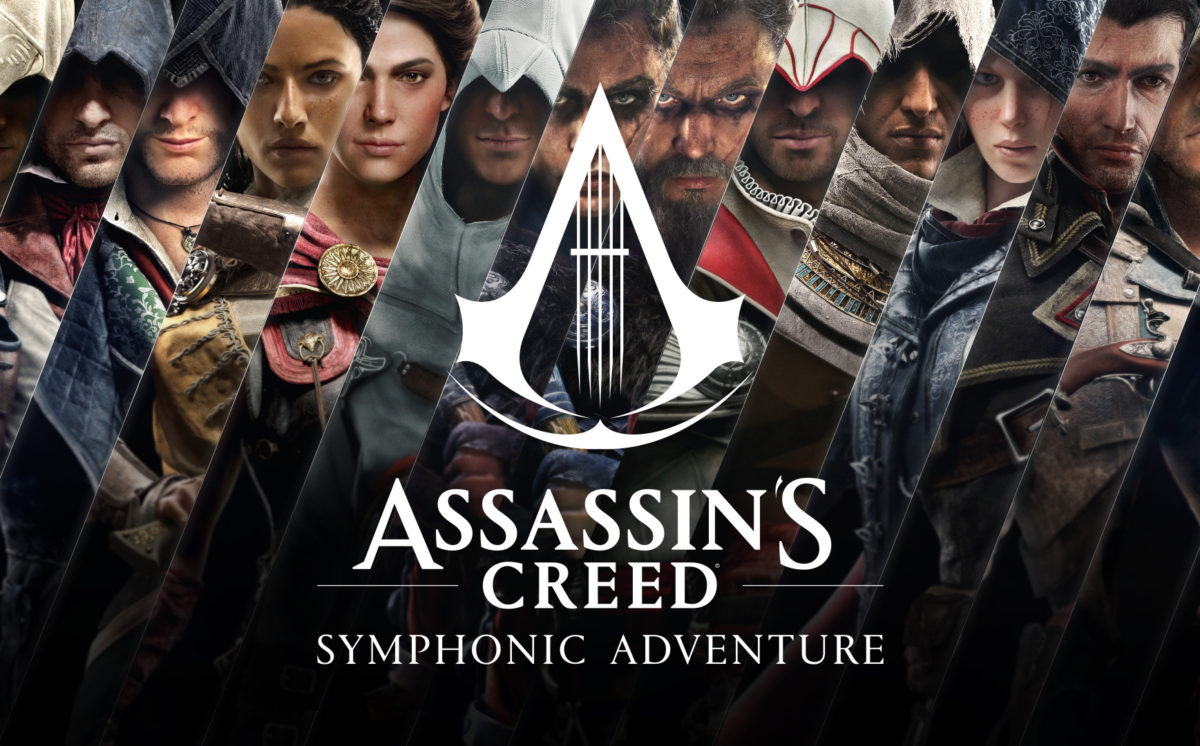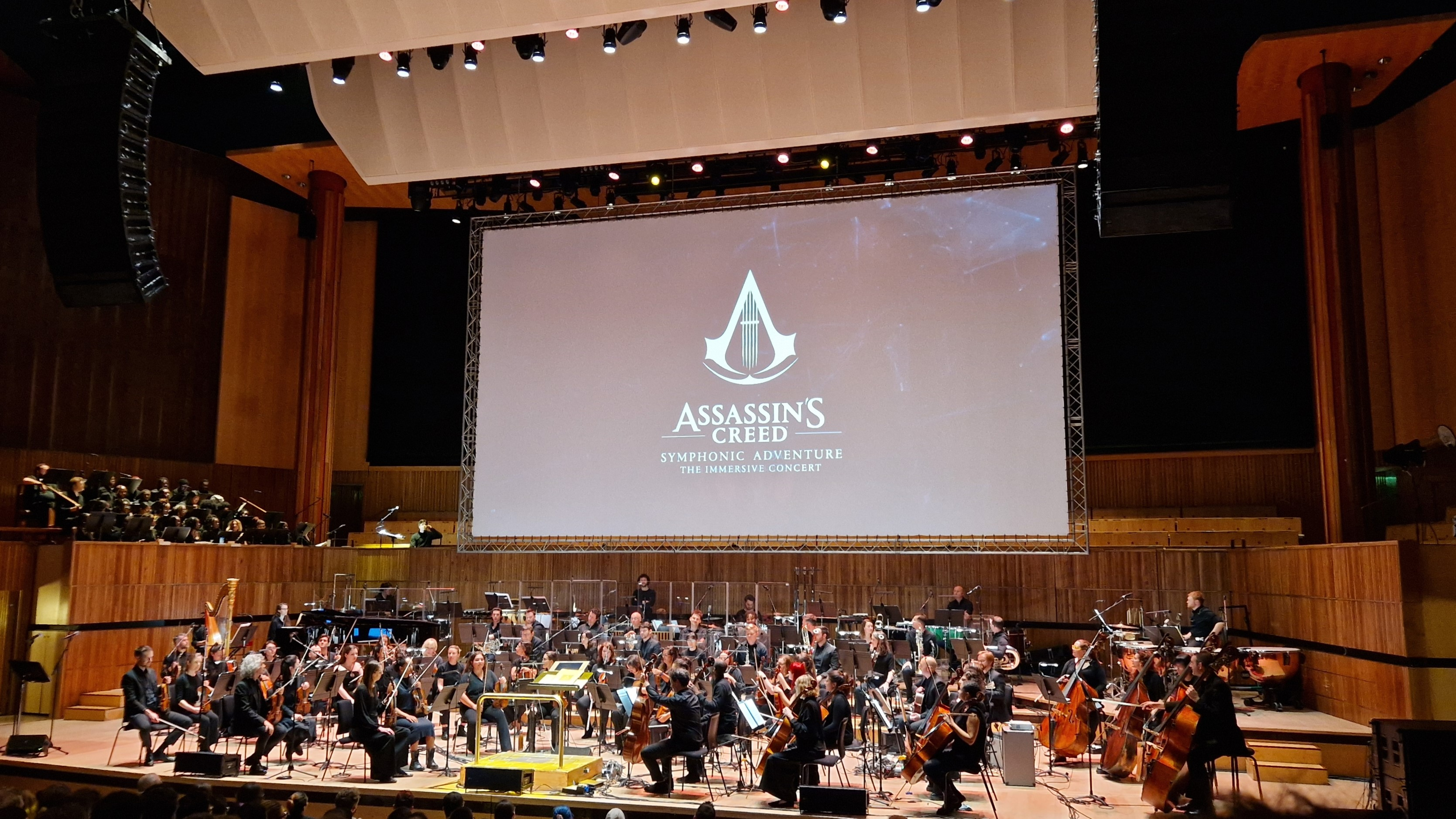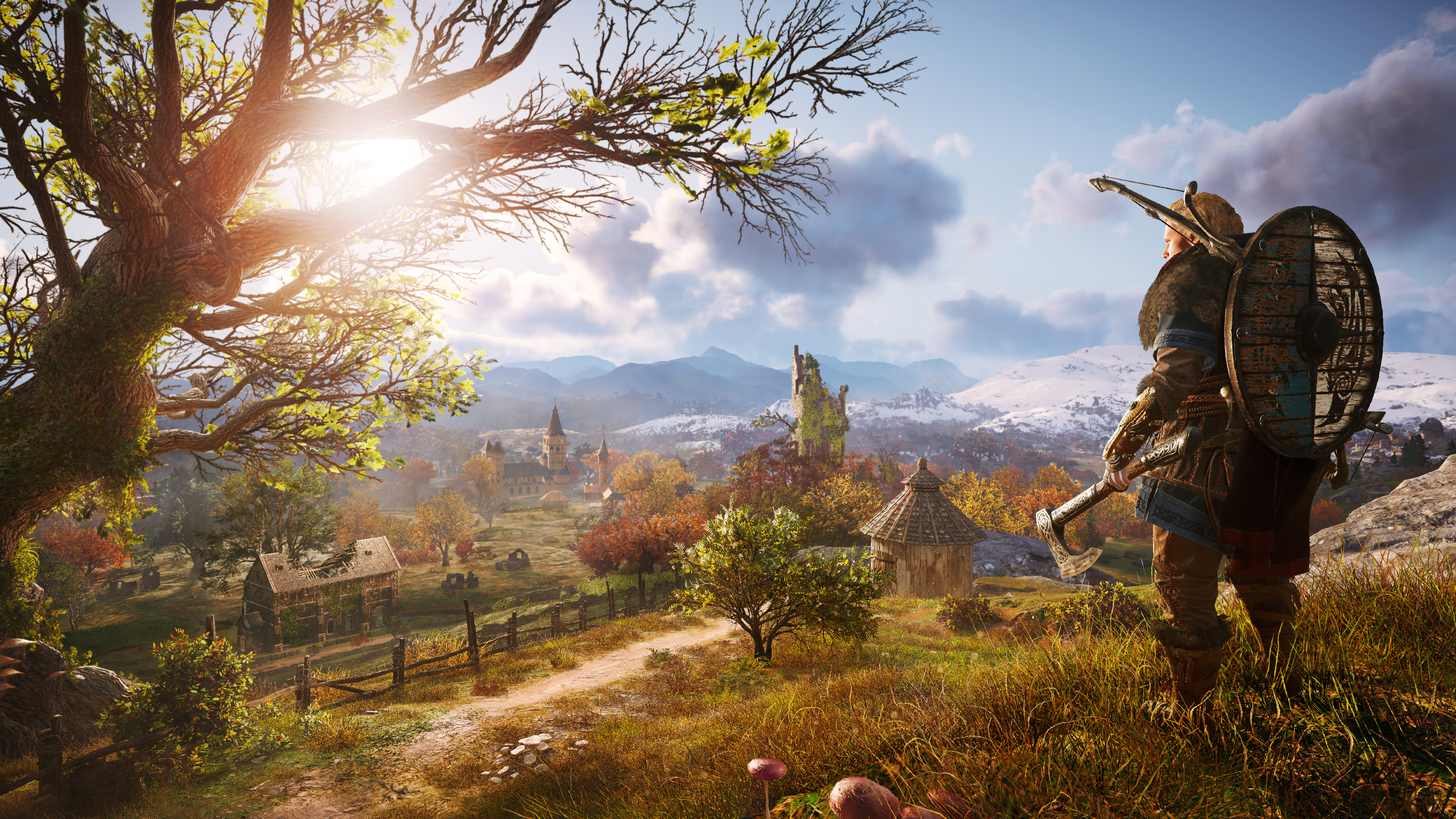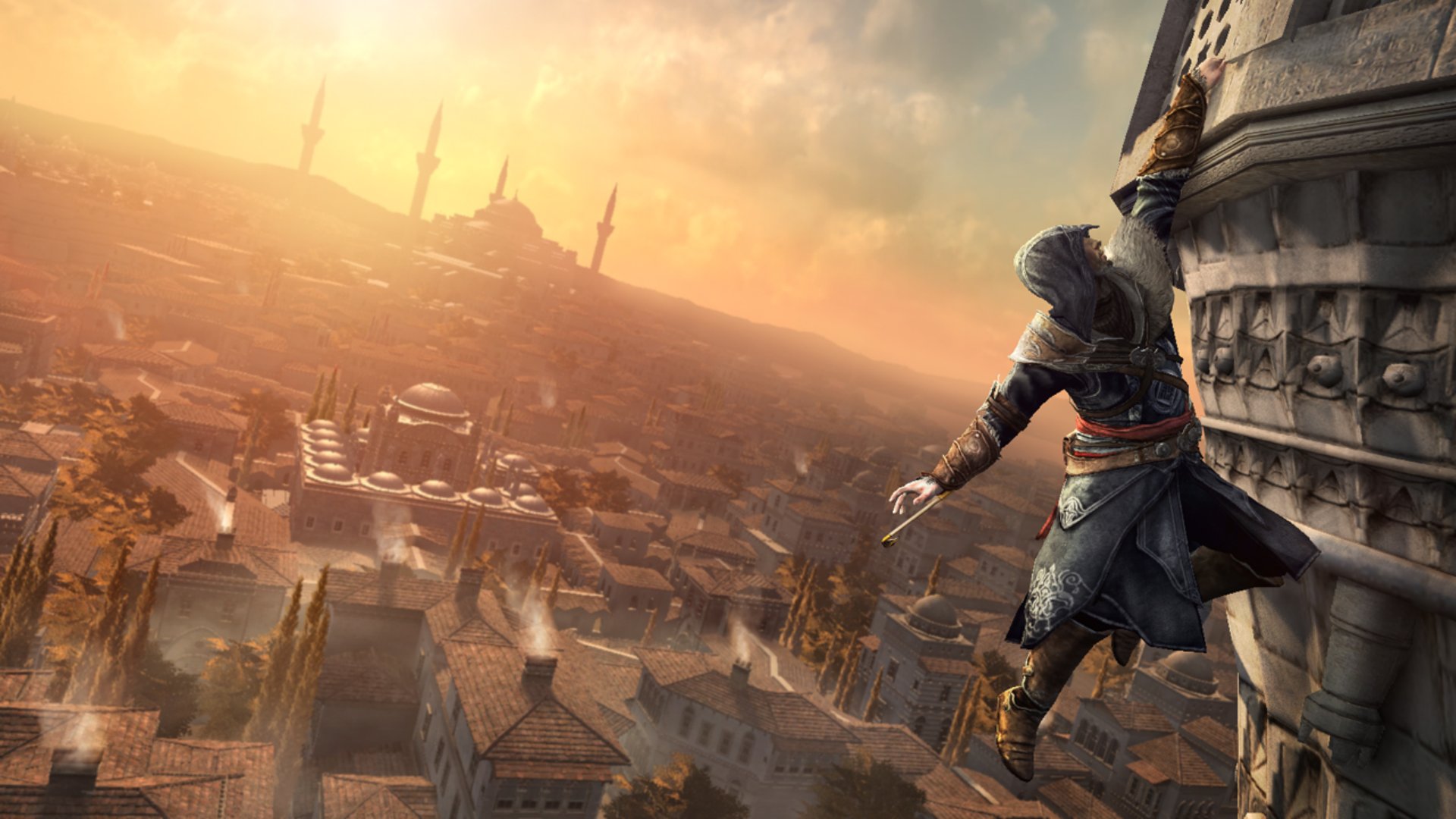
The Assassin's Creed Symphonic Adventure concert recently came to London's Southbank Centre for two nights of its latest tour. As a fan of the series, I've had my eye on this concert for a while – it seemed different from those that have come before.
It promised around three hours of immersion in the franchise with a live orchestra and choir accompanied by supporting HD imagery and game footage. It absolutely delivered on this promise.
In short, it is the best video game music concert I've ever been to. It is exactly what video game music concerts should be like – and, frankly, aspire to.
Eagle vision
There are a few factors which helped set this particular concert and experience apart from; each working brilliantly in conjunction with one another to create something truly special.

First, each game – every mainline entry in the series, played through in chronological order of their historic setting – was represented faithfully and with accuracy. More importantly, each was shown in a way that condensed full-length stories down to short, punchy experiences that even those unfamiliar could follow. Considering that the Assassin’s Creed games can vary in length from linear 15-or-so-hour adventures to sprawling 100+ hour open-world experiences, it’s no easy feat to condense each one to a similar short presentation of about a dozen minutes or so.
The curation and selection of the imagery and, naturally, music for each game's condensed story was deliberately and expertly done. There was the right mix of game trailer action, as well as in-game cutscenes and gameplay action tacked together with few visible seams or bumps that strung together the game’s story, but also gave the audience some of the best scenes and events from those games. There were even some dialogue and in-game audio additions too which further helped the imagery 'pop' and become more than just a background.
Each game was interspersed with various modern-day scenes showing the Animus device too – again, this wasn’t just a collection of compressed games, to be rushed through, the whole experience was cohesive, deliberately, and well-structured, and had a thread running through it.
Sign up for breaking news, reviews, opinion, top tech deals, and more.
Synchronizing the audio and visuals like this, with beats, combat blows, and events mapped to the tempo of the music elevated the experience enormously
Importantly, this being a music concert after all, the selection of the tracks from each score to accompany those scenes was nigh-on perfect too. The large-scale London Contemporary Orchestra and Kingdom Choir brought tunes and tracks to life that were deep within games’ soundtracks, rather than just a replaying of each entry’s main theme. Tracks that were clearly written by composers for key parts of games were selected, only reinforcing the clarity of the storytelling on offer, and showing that careful curation of tracks is the best way to bring games to life in an immersive live experience.
For example, the track ‘Ravensthorpe’ was played alongside footage from Assassin's Creed Valhalla where Eivor and their Viking band build their village, also called Ravensthorpe; ‘The High Seas’ was played alongside Edward Kenway and his pirate crew; and ‘HomeStead’ was selected to accompany parts of Assassin’s Creed 3 when protagonist Connor is seen visiting Davenport.
Quality curation of both those elements really made in-game moments like sailing the high seas in Black Flag, the Lisbon earthquake in Rogue, and the Battle of Thermopylae-intro to Odyssey (and much more) to life in a tangibly experiential way.
Full synchronization

The icing on the immersive cake, however, was the seamless meshing of visual and audio, to the extent that on-screen action, be it gameplay or cinematic trailer clips, occurred in time and in beat with the music.
This added excellent depth and a level of premium quality to the experience. It helped make you ‘feel’ every swordfight, parkour sequence, leap of faith, multi-enemy combat encounter, and every horse ride, with the music perfectly punctuating, accentuating, and enhancing moments in the footage.
Synchronizing the audio and visuals like this, with beats, combat blows, and events mapped to the tempo of the music elevated the experience enormously. The efforts of Ubisoft and the production company, Overlook Events, took what could have been a simple yet robust and enjoyable experience and instead made it one that was truly thrilling and enthralling. I could even see the whole choir, when not performing, glued to the screen and the experience too – it was a spectacle of scale, story, and intrigue, and it pulled people in.
And it wasn’t just a flourish every now and then; it was a constant theme and feature, and ensured that the show achieved the ‘immersive concert’ it set out to be.
The real deal

I've been to a fair few video game music concerts, and the Assassin’s Creed Symphonic Adventure is the best by far. It should now set the standard and template for those going forward.
Compared to the previous high-profile Assassin's Creed concert I remember from 2019 that I was excited to take my non-gamer parents and fiancee to, the difference is night and day. The Symphonic Adventure is the kind of format that's brilliant for fans and new listeners alike – it's the one I wish I took my parents to back in 2019 instead of the rather simplistic and bland event that took place that year.
It feels like we're in a golden age of video game music concerts, and blending the audio and visual technology like the Symphonic Adventure achieved can ensure that concerts can now become immersive experiences and means of storytelling, as well as celebrations of games’ music.
You might also like...
- Assassin's Creed Shadows release date - everything we know about the next release
- Our Assassin's Creed Mirage review
- Everything we know about the mysterious Assassin's Creed Hexe

Rob is the Managing Editor of TechRadar Gaming, a video games journalist, critic, editor, and writer, and has years of experience gained from multiple publications. Prior to being TechRadar Gaming's Managing Editor, he was TRG's Deputy Editor, and a longstanding member of GamesRadar+, being the Commissioning Editor for Hardware there for years, while also squeezing in a short stint as Gaming Editor at WePC just before joining TechRadar Gaming. He is also a writer on tech, gaming hardware, and video games but also gardens and landscapes, and has written about the virtual landscapes of games for years.